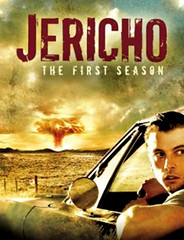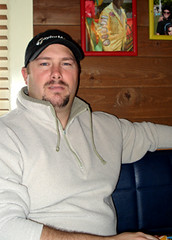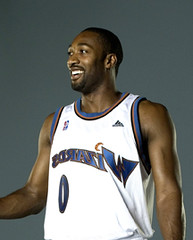When Tony Berkman, president of BlogCatalog, said he was going to have fun at BlogWorld & New Media Expo in Las Vegas, I told him to think again.
“What do you mean?” asked Berkman. “I thought you would take me to get a Nathan’s hotdog.”
“… a what?”
“They have Nathan’s hotdogs in Las Vegas, I remember …”
“Um, no.”
“So then what are we going to do?”
“Talk.”
“What are we going to talk about?”
“You tell me.”
“You aren’t interested in talking?”
“I’m interested in listening.”
“Are you going to give us a ride from the airport? …”
I started working with BlogCatalog by accident a few months ago. It’s not always formal, but we do have a lot of fun. Sure, sometimes it’s work; other times it’s a partnership. We started a few months ago.
Berkman had come up with an interesting idea to ask BlogCatalog members to use their blogs for good and raise awareness and funds for education through an Omidyar Network sponsored non-profit called DonorsChoose.org. It seemed like a great topic for our National Business Community Blog; I e-mailed him and asked for a news release.
It was their first Bloggers Unite campaign, but it wasn’t called that yet. Since they didn’t have a release, I told him I’d be happy to write one up for the blog and he could use it.
The campaign was an interesting idea. With so many bloggers writing from a contrarian’s point of view, this campaign seemed to provide something that social media sometimes lacks. The outcome was inspiring: 1,000 children directly benefited though DonorsChoose.org; and the non-profit organization received a tremendous amount of attention.
The second campaign was bigger. The third was even bigger. We haven’t calculated the outcomes yet. We’ll have a better picture starting tomorrow, after our post for hope competition closes. Even without the measures though, I already know the outcomes will be something worthwhile. BlogCatalog members are all that.
Beyond Bloggers Unite campaigns, we have been brainstorming with Berkman and the team about a couple of ideas related to BlogCatalog.com. They are some pretty big ideas; so I cannot post about them. But when Berkman told me he was coming to Las Vegas, I knew it would be the perfect opportunity to kidnap the team for a night and set some of these ideas in motion.
Most communication people like to talk. Unless I’m teaching or giving a presentation, mostly I don’t. I like to listen. Listening is the first step in a process we employ called a core message. I’m not going to write about the core message today (click the label if you want), but I will share one fundamental step: listening.
It makes me wonder. Maybe dialogue isn’t what people crave online. Maybe they want someone to listen.
“ … Did you hang up on me again?” Berkman asked jokingly.
Maybe that’s why BlogCatalog works. The BlogCatalog team over there listens to its members. Jeez, I hope it’s not a quiet evening.
If you haven’t heard about BlogWorld in Las Vegas this Nov. 8-9, Shel Isreal, Mike Arrington, Brian Clark, Arianna Huffington, and David Perlmutter are speaking. And more names that won’t fit in this post. It’s that big.
BlogCatalog will be at BlogWorld; I’ll be lending an assist. You’ll be able to find them at booth # 116 (members might want to watch for the announcement because it comes with good news). After hours, at least one night, the people behind the fastest-growing social network for bloggers will be with me. I'm putting them to work.

“What do you mean?” asked Berkman. “I thought you would take me to get a Nathan’s hotdog.”
“… a what?”
“They have Nathan’s hotdogs in Las Vegas, I remember …”
“Um, no.”
“So then what are we going to do?”
“Talk.”
“What are we going to talk about?”
“You tell me.”
“You aren’t interested in talking?”
“I’m interested in listening.”
“Are you going to give us a ride from the airport? …”
I started working with BlogCatalog by accident a few months ago. It’s not always formal, but we do have a lot of fun. Sure, sometimes it’s work; other times it’s a partnership. We started a few months ago.
Berkman had come up with an interesting idea to ask BlogCatalog members to use their blogs for good and raise awareness and funds for education through an Omidyar Network sponsored non-profit called DonorsChoose.org. It seemed like a great topic for our National Business Community Blog; I e-mailed him and asked for a news release.
It was their first Bloggers Unite campaign, but it wasn’t called that yet. Since they didn’t have a release, I told him I’d be happy to write one up for the blog and he could use it.
The campaign was an interesting idea. With so many bloggers writing from a contrarian’s point of view, this campaign seemed to provide something that social media sometimes lacks. The outcome was inspiring: 1,000 children directly benefited though DonorsChoose.org; and the non-profit organization received a tremendous amount of attention.
The second campaign was bigger. The third was even bigger. We haven’t calculated the outcomes yet. We’ll have a better picture starting tomorrow, after our post for hope competition closes. Even without the measures though, I already know the outcomes will be something worthwhile. BlogCatalog members are all that.
Beyond Bloggers Unite campaigns, we have been brainstorming with Berkman and the team about a couple of ideas related to BlogCatalog.com. They are some pretty big ideas; so I cannot post about them. But when Berkman told me he was coming to Las Vegas, I knew it would be the perfect opportunity to kidnap the team for a night and set some of these ideas in motion.
Most communication people like to talk. Unless I’m teaching or giving a presentation, mostly I don’t. I like to listen. Listening is the first step in a process we employ called a core message. I’m not going to write about the core message today (click the label if you want), but I will share one fundamental step: listening.
It makes me wonder. Maybe dialogue isn’t what people crave online. Maybe they want someone to listen.
“ … Did you hang up on me again?” Berkman asked jokingly.
Maybe that’s why BlogCatalog works. The BlogCatalog team over there listens to its members. Jeez, I hope it’s not a quiet evening.
If you haven’t heard about BlogWorld in Las Vegas this Nov. 8-9, Shel Isreal, Mike Arrington, Brian Clark, Arianna Huffington, and David Perlmutter are speaking. And more names that won’t fit in this post. It’s that big.
BlogCatalog will be at BlogWorld; I’ll be lending an assist. You’ll be able to find them at booth # 116 (members might want to watch for the announcement because it comes with good news). After hours, at least one night, the people behind the fastest-growing social network for bloggers will be with me. I'm putting them to work.





















